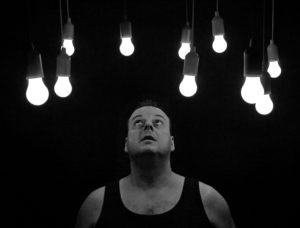 Choosing which outdoor lighting solution/s to get for your [city] home can be tricky. Aside from aesthetics (let’s face it, you want your lights to complement your landscaping), you also have a number of safety issues to consider, such as brightness, water resistance, and durability against heat and cold.
Choosing which outdoor lighting solution/s to get for your [city] home can be tricky. Aside from aesthetics (let’s face it, you want your lights to complement your landscaping), you also have a number of safety issues to consider, such as brightness, water resistance, and durability against heat and cold.
Light-emitting diode (LED) bulbs specifically designed for outdoor applications meet these requirements, and then some. These LEDs are not only water-resistant and shockproof, they are very energy-efficient, using up to 90 percent less energy than traditional outdoor lighting solutions.
If you’re new to LED lighting and aren’t sure what to look for when buying LEDs for your [city] home, here’s what you need to know.
Check the UL Rating
It’s a good idea to know the difference between the wet or damp UL (Underwriters Laboratory) rating of an outdoor LED bulb, which should be indicated on the device’s packaging.
A UL damp light bulb is great for covered outdoor areas, like covered porches, canopies, and marquees—places that offer some degree of shelter from water, rain, and snow. On the other hand, UL wet lights are ideal for outdoor spaces that offer no or little protection from the elements.
Size and Placement
To avoid any confusion when choosing from the hundreds of different outdoor LED fixtures on the market, you need to figure out what size of LED you want and what specific outdoor space you intend to use it in.
For example:
- Pendants and hanging lights are great for spaces with generous headspace so they don’t hang too low
- Wall sconces look wonderful next to doors
- Track lights work well in garages
- Ground lights will give your walkway more visibility and a beautiful glow
Safety or Decoration?
Outdoor lights not only serve a decorative purpose, they also help improve safety and security in your outdoor spaces.For starters, solar-powered LEDs, recessed lights, and flood lights are ideal safety lighting solutions, and are best used on decks, pathways, walkways, outdoor stairways, driveways, gardens, and parking areas among others.
On the other hand, ceiling lights, pendant and chandelier lights, wall sconces, and string lighting among others tend to generate a softer glow, serving primarily as decorative lighting solutions. They can still be used on the front of your house, pathways, walkways, gardens, trees, and gazebos.
Materials and Finish
Outdoor light fixtures come in a variety of materials and finishes.
- Brass holds well in most environments, but may darken over time.
- Copper light fixtures work well in most climates but are not as durable as brass fixtures.
- Cast aluminum is affordable and a great alternative to copper and brass outdoor lighting, but it can corrode quickly and may not be a great choice when living in coastal areas.
- Ceramic outdoor light fixtures are unique and decorative, very weather resistant.
Controls
Outdoor LED lights work just like other regular lighting solution, nut they also come with the added feature of being dimmable on their own or being compatible with third-party dimming controllers. This lets you fine-tune how bright or dim you want your outdoor lighting to be, allowing you to create a wide range of lighting effects and atmospheres.
Some outdoor LEDs also have timers and automation features that let you set a schedule for your lights to come on and off at specific times of the day. Sensors also program the LEDs to automatically produce full brightness when they detect motion—a useful protection against criminal activity.
Keep these factors in mind to help you find the best outdoor LED lights for your needs.

![5 Reasons to Use Dimmable LED Lights in Your [city] Home [city]](https://eepros.com/wp-content/uploads/2017/05/pexels-photo-237371-300x200.jpeg)
![Smart Lighting Tips for Your [city] Business [city]](https://8blocks.s3.amazonaws.com/eepros/blog-images/2015/04/9FE5D3846C-300x158.jpg)
![How Long Do Modern Light Bulbs Last? [city]](https://8blocks.s3.amazonaws.com/eepros/blog-images/2015/11/QILKBUFKZE-300x169.jpg)
![Why Your Business Should Be Using Human-Centric Lighting [city]](https://eepros.com/wp-content/uploads/2019/07/lightbulb-3449671_640-300x200.jpg)